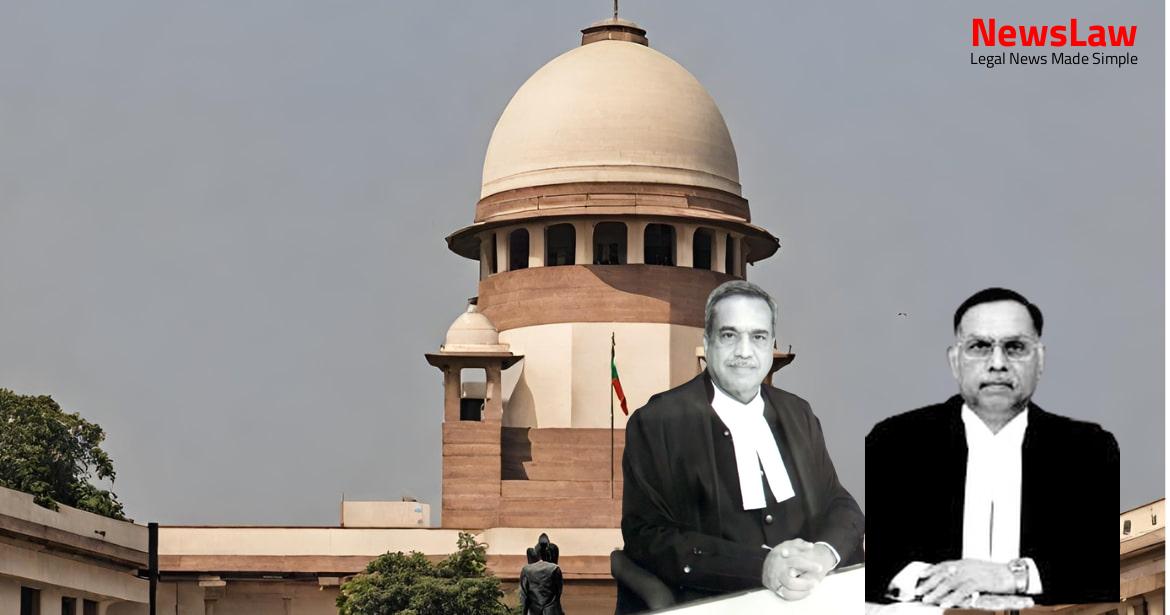Delve into the intricacies of equitable treatment of creditors in the realm of insolvency law. A closer examination reveals the court’s meticulous legal analysis aimed at striking a balance among stakeholders and upholding the principles of fairness and equity. Stay tuned to unravel the complexities of creditor rights and the legal framework governing insolvency proceedings.
Facts
- The RP invited ‘Expressions of Interest’ from prospective resolution applicants on 15 July 2019.
- Operational creditors were allocated 19.62% of the upfront payment, while financial creditors received 10.32%.
- Four resolution plans were received from Bharti Airtel Ltd., Reliance Digital Platform & Project Services Limited, VFSI Holdings Pte. Ltd., and UV Asset Construction Company Ltd.
- CoC engaged with the resolution applicants between 2 January 2020 and 2 March 2020 for revised plans.
- NCLAT upheld the order related to the Corporate Debtor.
- The RP issued a fresh public announcement on 7 May 2019 for inviting claims from creditors.
- CoC replaced the IRP with Mr. Anish Niranjan Nanavaty as the RP on 30 May 2019.
- The CIRP of the Corporate Debtor was initiated on 15 May 2018.
- Operations creditors who had filed claims were not excluded from the CIRP.
- Affidavits were exchanged between the parties.
- Extensions were granted for completing the CIRP as per the provisions of the IBC.
- Financial terms of the resolution plan were discussed and approved.
- Operational creditors claimed equitable treatment but NCLAT ruled it can only be claimed by similarly situated creditors.
- NCLAT found no substance in grievances regarding preferential shares and distribution mechanism.
- Appellants challenged lack of information on CIRP, unfair treatment of claims, exclusion of preference shares value, irregularities in fund accumulation, and reduction of claims.
- NCLAT rejected the appeal based on entitlement to receive not less than liquidation value as per Swiss Ribbons and Essar Steel judgments.
- NCLAT relied on prior judgments in dismissing the appeal on 4 January 2021.
- Certain entities de-recognized as financial creditors due to NCLT order of 2 March 2021.
- The resolution plan was approved by 100% of voting shares, making exclusion of some financial creditors irrelevant.
- Opportunities granted for filing affidavits to explain the position, leading to dismissal of the appeal on 10 March 2021.
Also Read: Electoral Malpractices in Mayor Election
Arguments
- Neeraj Kishan Kaul, representing the respondent, argues that the IBC has specific provisions for operational creditors, ensuring fair payment in resolution plans.
- The CIRP must be fair to all stakeholders, not just favoring financial creditors.
- The lack of transparency in the resolution plan process has disadvantaged operational creditors, who are mostly small and medium-sized companies.
- The respondent highlights that assets of the Corporate Debtor, indirectly held through subsidiaries, should be available for distribution to all stakeholders.
- An amount of Rs 800 crores reserved exclusively for financial creditors in the resolution plan is questioned for favoring certain parties over others.
- The exclusion of certain creditors from the CoC has significant implications on fund distribution in the resolution plan.
- The NCLT’s decisions regarding exclusion of creditors from the CoC are controversial and under appeal.
- The principle of equitable treatment among creditors of the same class is stressed, as per Explanation 1 to Section 30(2)(b) of the IBC.
- Incorrect assumptions and errors in overlooking details are highlighted in the appellant’s arguments.
- No specific directions were issued regarding indirect creditors not being members of the CoC during the application by Doha Bank.
- Operational creditors facing issues recognized in the Insolvency Committee Report of February 2020.
Also Read: Balancing Power and Transparency: Electoral Bonds Struck Down, Disclosure Mandated
Analysis
- The jurisdiction of the Adjudicating Authority is limited to determining whether the resolution plan complies with the statutory requirements of the IBC.
- The Adjudicating Authority cannot scrutinize the commercial wisdom of the CoC in approving a resolution plan.
- The IBC does not confer independent equity-based jurisdiction on the Adjudicating Authority.
- The Adjudicating Authority must abide by the defined jurisdiction as per the statute itself.
- The resolution plan approved by the CoC must meet the requirements specified in Section 30(2) of the IBC.
- The Adjudicating Authority’s function is to ensure the approved resolution plan complies with the statutory provisions.
- The value of preference shares is included in determining the liquidation value of the Corporate Debtor.
- Approval of the resolution plan is a statutory function entrusted to the CoC.
- The Adjudicating Authority’s jurisdiction in approving a resolution plan is based on fulfilling the requirements of Section 30(2) of the IBC.
- The Adjudicating Authority and the Appellate Authority must abide by the statutory provisions of the IBC once its requirements are fulfilled.
- There is no unchartered jurisdiction in equity for the Adjudicating Authority or the Appellate Authority, as their jurisdiction arises from the statutory framework.
- In the US Bankruptcy Code, restructuring plans must not unfairly discriminate and must be fair and equitable.
- Under the UK Insolvency Act, 1986, a company voluntary arrangement can be challenged if it unfairly prejudices a creditor.
- The Adjudicating Authority and the Appellate Authority cannot review the business decisions of financial creditors, as highlighted in the K Sashidhar case.
- Payment under a resolution plan must be fair and equitable among operational creditors as a class, as per Section 30(2)(b).
- The Adjudicating Authority’s jurisdiction while approving a resolution plan is limited to scrutinizing the plan as approved by the CoC under Section 31.
- The Adjudicating Authority or the Appellate Authority cannot interfere with a business decision made by the CoC, as long as it complies with the IBC provisions and regulations.
- Equitable treatment in insolvency law is only for similarly situated creditors, as per the UNCITRAL Legislative Guide.
- Decisions by the creditors should not be interfered with by the court, as recommended by the UNCITRAL Legislative Guide.
- The decision of the CoC must maximize the value of assets of the Corporate Debtor and balance the interests of all stakeholders, including operational creditors.
- Equitable treatment of creditors applies only within the same class, as emphasized in the Essar Steel India Limited case.
- Financial creditors and operational creditors belong to distinct classes, as established in the Swiss Ribbons case.
- Resolution plan approved by requisite majority of CoC in conformity with Section 30(4).
- Jurisdiction of Adjudicating Authority confined to determining fulfillment of Section 30(2) requirements in approved plan.
- Decisions of Adjudicating Authority and Appellate Authority in conformity with law once statutory requirements fulfilled.
- No merit found in appeal as plan approved by 100% voting share of CoC.
- Irrelevance of excluding some financial creditors from CoC when plan approved unanimously.
Also Read: Recall of Resolution Plan Approval: Legal Analysis
Decision
- The appeal has been dismissed.
- Any pending applications have been disposed of.
Case Title: PRATAP TECHNOCRATS (P) LTD. Vs. MONITORING COMMITTEE OF RELIANCE INFRATEL LIMITED (2021 INSC 395)
Case Number: C.A. No.-000676 / 2021



